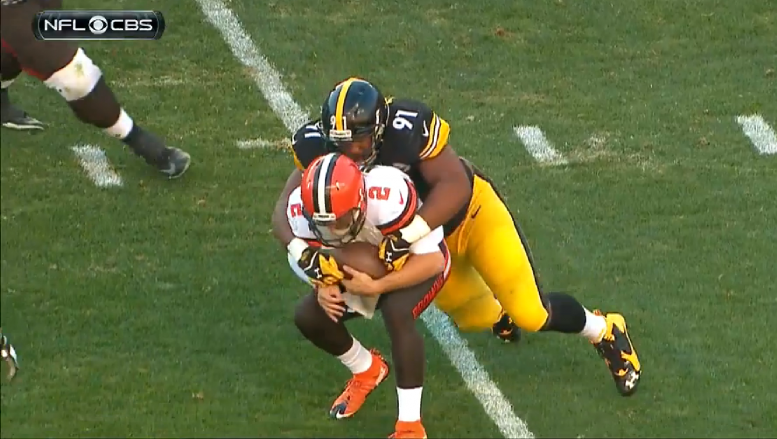Prior to the start of last season, much was made about the dreadful Pittsburgh Steelers pass rush and how the front seven needed to get back to its attack ways getting to the quarterback consistently.
Although the Steelers recorded 48 sacks last season — the third-most sacks in the NFL — there is still plenty of concern regarding this season’s pass rush, mainly with the state of the outside linebacker picture still a bit murky.
That’s where Cameron Heyward and Stephon Tuitt come into the picture.
Hewyard (7.0) and Tuitt (6.5) combined for 13.5 sacks last season — roughly 28 percent of the team sacks from last season. A lot of that had to do with defensive coordinator Keith Butler allowing the bookends to become attacking defenders instead of worrying about occupying gaps and blockers.
By turning them loose, the front seven took a major step forward. Now, Heyward and Tuitt might have to do a bit more to help make the defense as a whole that much better.
Is it out of the question to ask the two defensive ends to push their individual sacks totals closer to 10.0 this season? I don’t think it’s out of the question, and in fact, I think it’s certainly doable, especially with the addition of rookie Javon Hargrave in the middle.
The rookie nose tackle should draw more interest in the base defense, but he’ll also be able to keep Heyward and Tuitt fresh throughout games and the rest of the season, possibly allowing the two to rush the passer with more consistency each and every week.
Should Heyward and Tuitt get closer to 10.0 sacks each, it will make the defense that much better this season. They might not increase the overall total of the team, but by becoming potentially dominant pass rushers could allow Butler to focus more on coverage issues, which should only help the backend improve.
While the focus should rightfully on guys like Bud Dupree, Jarvis Jones, James Harrison and Arthur Moats when it comes to rushing the passer off the edge, my focus will be on Heyward and Tuitt. How they get after the QB could play a major role in the success/failure of the defense.








